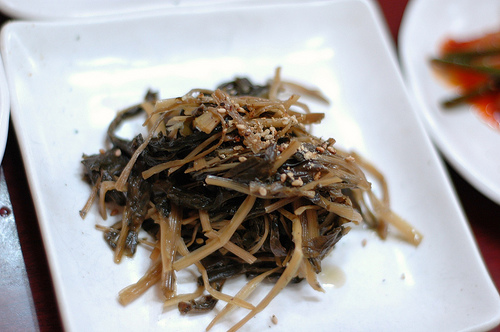Doellingeria Scabra on:
[Wikipedia]
[Google]
[Amazon]
''Doellingeria scabra'' is a perennial herb of the family

Asteraceae
Asteraceae () is a large family (biology), family of flowering plants that consists of over 32,000 known species in over 1,900 genera within the Order (biology), order Asterales. The number of species in Asteraceae is rivaled only by the Orchi ...
from Eurasia. It is frequently found in wild mountain regions of Korea, eastern Russia, China, and Japan.
Distribution
''Doellingeria scabra'' is native to Eurasia. It is actively cultivated in temperate regions of Korea for varying uses.Habitat and ecology
''Doellingeria scabra'' is found in woods and thickets, especially on hills and low mountains. Forest clearings and warm temperate areas suit it well. Moist soil and sunny conditions are ideal for this plant. It can be cultivated in lightly sandy, loamy, or clay soils with adequate drainage and cannot grow in the shade.''Aster scaber - Thunb'', PFAF Plant Database, Accessed May 5, 2014, http://www.pfaf.org/user/Plant.aspx?LatinName=Aster+scaberDescription
''Doellingeria scabra'' grows up to 1.2 meters (4 ft) tall. Its stems stand erect. Its hermaphroditic flowers bloom between August and October. Its seeds ripen between September and November. Insect pollinators such as bees and flies aid pollen exchange. It is capable of self-fertilization. The green leaves are cordate-shaped and have palmate venation. Leaf edges are serrated–jagged and resemble saw blades. Trichomes can be found all over its surface.Use
Culinary

Korea
''Doellingeria scabra'' thrives in the dry mountain ranges of Korea. It is known for its distinctive fragrance and taste, and is frequently used inKorean cuisine
Korean cuisine is the set of foods and culinary styles which are associated with Korean culture. This cuisine has evolved through centuries of social and political change. Originating from ancient Prehistoric Korea, agricultural and nomad ...
. Known among locals for its medicinal use, studies show it contains many beneficial compounds. Its Korean name is ''chamchwi'' (, "true chwi"), and it is often simply referred to as '' chwinamul'' by the Korean locals.
Either stir-fried or blanched, it is often used as the main ingredient of herbal side dishes called '' namul''. Blanched ''chamchwi'' can be pounded with rice and steamed to make a variety of '' tteok'' (rice cake), called ''chwitteok''. Stir-fried ''chamchwi'' can be used as a wrapping vegetable in a '' ssam'' (wrap) dish called ''chwissam'', wrapping pork and other vegetables and tied with wild chives. Sometimes, fresh ''chamchwi'' is brined and made into water kimchi with liquorice broth, called ''chamchwi-kimchi''. It is also one of the ingredients that frequently feature in bibimbap recipes. It can be used as a flavoring herb in kimchi, rice
Rice is a cereal grain and in its Domestication, domesticated form is the staple food of over half of the world's population, particularly in Asia and Africa. Rice is the seed of the grass species ''Oryza sativa'' (Asian rice)—or, much l ...
, and even Korean-style Italian pasta
Pasta (, ; ) is a type of food typically made from an Leavening agent, unleavened dough of wheat flour mixed with water or Eggs as food, eggs, and formed into sheets or other shapes, then cooked by boiling or baking. Pasta was originally on ...
dishes.
References
External links
* {{Taxonbar, from=Q12618577 scabra Korean vegetables Namul